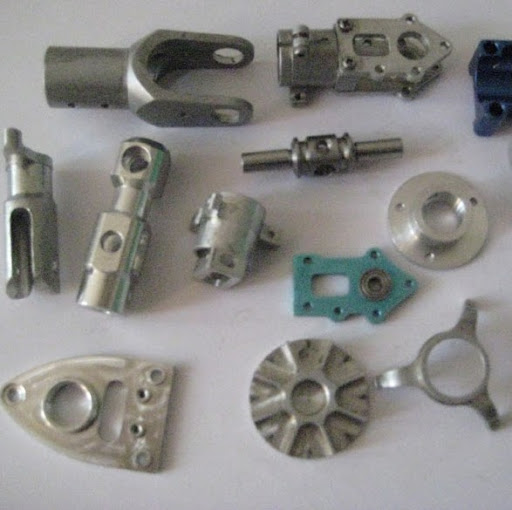Li Fang
age ~74
from Folsom, CA
- Also known as:
-
- Fang M Li
- Fang S Li
Li Fang Phones & Addresses
- Folsom, CA
- Richmond, CA
- San Diego, CA
- Grizzly Flats, CA
- Houghton, MI
- Sacramento, CA
Wikipedia References

Li Fang
Work:
Position:
Prime Minister
Education:
Specialty:
Compiler
Resumes

Regional Sales Manager At Talesun Solar Co.
view sourcePosition:
Regional Sales Manager at Talesun Solar Co.
Location:
San Francisco Bay Area
Industry:
Renewables & Environment
Work:
Talesun Solar Co. since Jul 2012
Regional Sales Manager
Trina Solar Mar 2012 - Jul 2012
Sales Operations Specialist
Trina Solar - Bay Area, CA Oct 2011 - Apr 2012
Inside Sales Associate
REC Solar - Sunnyvale, CA Jun 2011 - Oct 2011
Sales Associate
REC Solar - Sacramento, California Area Aug 2010 - Jun 2011
Events Coordinator
Regional Sales Manager
Trina Solar Mar 2012 - Jul 2012
Sales Operations Specialist
Trina Solar - Bay Area, CA Oct 2011 - Apr 2012
Inside Sales Associate
REC Solar - Sunnyvale, CA Jun 2011 - Oct 2011
Sales Associate
REC Solar - Sacramento, California Area Aug 2010 - Jun 2011
Events Coordinator
Education:
University of California, Davis
Bachelor of Arts, Sociology and Communication
Bachelor of Arts, Sociology and Communication
Skills:
Solar
Inside Sales
Sales Operations
Lead Generation
Event Management
Event Marketing
Sales Trainings
Sales Management
Strategic Sales
B2B Marketing
Green Technology
Solar Energy
Sales
Renewable Energy
Inside Sales
Sales Operations
Lead Generation
Event Management
Event Marketing
Sales Trainings
Sales Management
Strategic Sales
B2B Marketing
Green Technology
Solar Energy
Sales
Renewable Energy
Interests:
New Technology, Neurolinguistic Programing, Leadership Skills, Entrepreneurship, Global Developments.
Languages:
English
Chinese Mandarin
Chinese Mandarin
Awards:
Solar Ninja Award
REC Solar
Employee of the Month
REC Solar
Employee of the Month

Li Marina Fang
view source
Li Fang
view source
Li Shun Fang
view source
Li Fang
view source
Li Fang
view sourceSkills:
Engineering

Li Fang
view source
Manager At Corning
view sourcePosition:
Manager at Corning
Location:
United States
Industry:
Electrical/Electronic Manufacturing
Work:
Corning
Manager
Manager
Name / Title
Company / Classification
Phones & Addresses
H & Y LLC
President
BROTHER AUTO ENTERPRISES, INC
Business Services
Business Services
1002 S Claremont St, San Mateo, CA 94402
YAMATO AT ONTARIO INC
Managing
Twin Palace LLC
Retail & Wholesale · Whol Jewelry/Precious Stones
Retail & Wholesale · Whol Jewelry/Precious Stones
1951 Gresham Dr, Alameda, CA 94501
(510)5231554, (910)8640916
(510)5231554, (910)8640916
Us Patents
-
Method And Constructs For Inhibiting Protein Expression In Bacteria
view source -
US Patent:6686174, Feb 3, 2004
-
Filed:Apr 16, 1999
-
Appl. No.:09/293427
-
Inventors:Li Fang - Burlingame CA
Masanori Mitta - Kyoto, JP
Masayori Inouye - Piscataway NJ -
Assignee:The University of Medicine and Dentistry of New Jersey - New Brunswick NJ
-
International Classification:C07H 2102
-
US Classification:435 691, 4352523, 43525233, 4353201, 435471, 536 231, 536 241, 536 245
-
Abstract:A method of inhibiting the translation of bacterial mRNA is disclosed. The method comprises overexpressing in a bacterium an mRNA which contains a sequence which is complementary to the anti-downstream box region of the 16S rRNA. RNA and DNA constructs for the overexpression of the mRNA of the invention are disclosed. Further, there are disclosed isolated DNA constructs that direct the prolonged expression of a heterologous gene in a cold-shocked bacterium at reduced temperature. The construct can comprise a promoter region of a cold-shocked inducible gene. The replication vehicle comprising such DNA constructs and a method for overexpressing a heterologous gene in a bacterium transformed with such a replication vehicle are also disclosed.
-
Detecting Cancer Driver Genes And Pathways
view source -
US Patent:20210222248, Jul 22, 2021
-
Filed:Apr 14, 2017
-
Appl. No.:16/093588
-
Inventors:- Pleasanton CA, US
Aparna CHHIBBER - San Mateo CA, US
Marghoob MOHIYUDDIN - Foster City CA, US
Li Tai FANG - San Francisco CA, US
Hugo Y.K. LAM - Sunnyvale CA, US -
Assignee:Roche Sequencing Solutions, Inc. - Pleasanton CA
-
International Classification:C12Q 1/6886
G16B 20/20 -
Abstract:Described herein are methods, systems, and apparatuses for detecting significantly mutated genes/pathways in a cancer cohort. A driver gene detection technique taking into account the heterogeneous mutational context in a cancer cohort is disclosed. A statistical model of a gene-specific mutation rate distribution (e.g., using an optimized gene specific mean estimation and/or a gene-specific dispersion estimation) is used to model a sample/gene-specific background mutation rate. The statistical model may then be used to detect gene/pathway enrichment and distinguish tumor suppressors and oncogenes based on the spatial distribution of non-silent mutations, loss-of-function mutations, and/or gain-of-function mutations.
Myspace
Youtube

Li Fang Fang
view source
Li Hui Fang
view source
Li Li Fang
view source
Li Qui Fang
view source
Li Liao Fang
view source
Li Fang Siow
view source
Li Fang
view source
Li Fang
view sourcePlaxo

Fang LI
view sourceRJA Group

fang Li
view sourcefarway dubai

Yu Fang Li
view sourceHubei Kaiyuan Chemicals and Technology Co
Classmates

LI Fang | Lycee Francais ...
view sourceGoogleplus

Li Fang

Li Fang

Li Fang
About:
Doctorante en urbanismeUniversité Paris-Est Lab’Urba – In... Français d’Urbanisme

Li Fang

Li Fang

Li Fang

Li Fang

Li Fang
Get Report for Li Fang from Folsom, CA, age ~74





